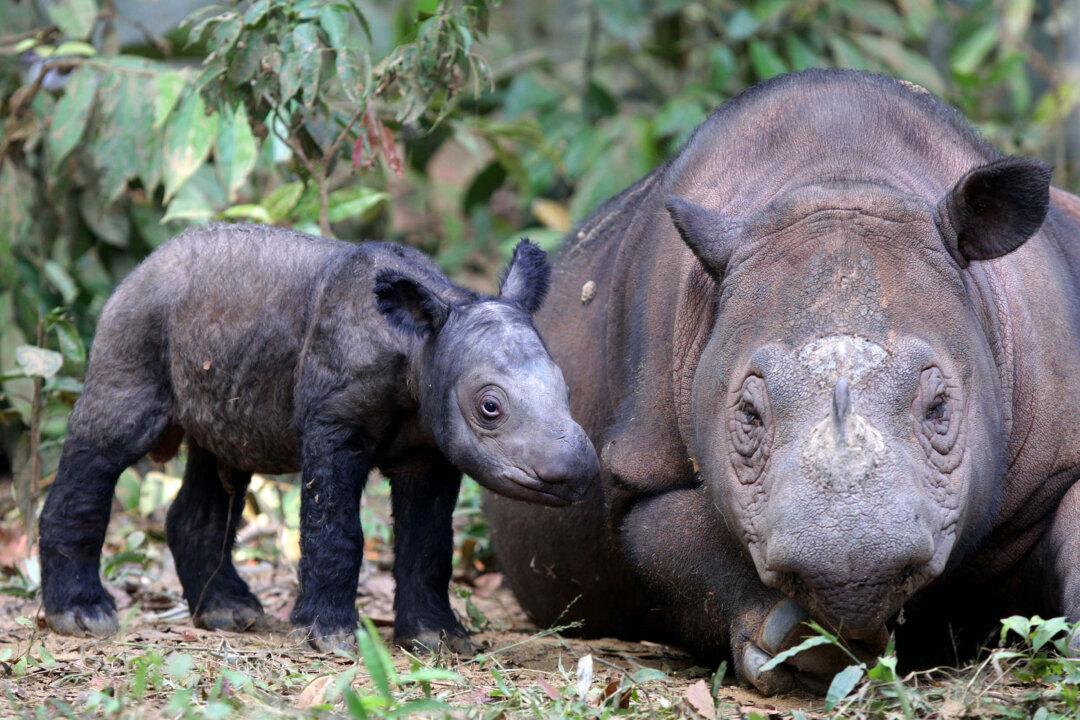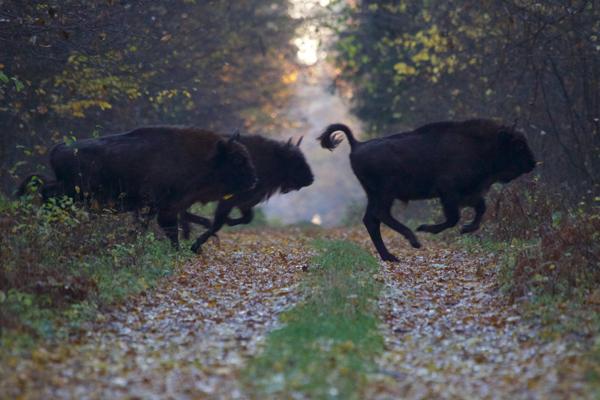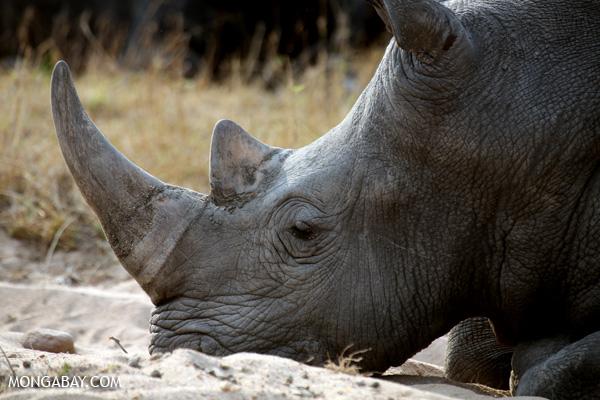There are no Sumatran rhinos left in the wild in the Malaysian state of Sabah, confirmed Masidi Manjun, the Tourism, Culture, and Environment minister, over the weekend of April 25–26. In 2008, conservationists estimated there were around 50 rhinos in the state. Five years later, it dropped that estimate to just 10. Now, it’s admitted the awful truth: the wild rhino is very likely gone.
“We are facing the prospect of our Sumatran rhinos going extinct in our lifetime,” Manjun noted at an environment seminar.
Sabah’s rhino is a distinct subspecies of Sumatran rhino, known as the Bornean rhino (Dicerorhinus sumatrensis harrissoni), and it looks increasingly possible that the Bornean rhino may only be represented by three surviving individuals, all of which are held in fenced, natural conditions at the Borneo Rhinoceros Sanctuary (BRS) in Sabah. These include one male, Tam, and two females, Iman and Puntung.
“If numbers of baby Sumatran rhinos can quickly be boosted in the coming few years, there is still hope to save the species from extinction,” said John Payne, the executive director of the Borneo Rhino Alliance (BORA) and one of the world’s top experts on the species. “The only way now to achieve that is to use in vitro fertilization to produce the embryos and to have a few fertile females in well-managed fenced facilities, under excellent care, as the surrogate mothers.”
Conservationists had hoped that Tam would be able to mate naturally with one of the females, however Iman is suffering from tumors in her uterus while Puntung has cysts, making natural reproduction next to impossible despite years of trying. Now, the team is turning to technology for hope. Payne said if in vitro fertilization works, “each mother could then bear and raise a baby every three years.”
He added, however, that obstruction remains strong to this path.
“As long as prevailing resistance remains from the relevant governments, IUCN, and the big NGOs, then the species will go extinct, and those institutions, not poachers or oil palm producers, will have to shoulder most of the ensuing blame.”
There may be a few more surviving Bornean rhinos, but these would be in Kalimantan or Indonesian Borneo. Two years ago, camera traps revealed at least one wild rhino in the state—after no records for decades. But it may only be that: just one.
Across the Java Sea, the Sumatran rhino is holding on by a thread. Conservationists estimate that less than a hundred rhinos survive on the Indonesia island of Sumatra today, split into fragmented populations spanning three national parks. Five of these rhinos, which belong to the subspecies Dicerorhinus sumatrensis sumatrensis, are also held in semi-captive conditions at the Sumatran Rhino Sanctuary, including a baby rhino born three years ago.





